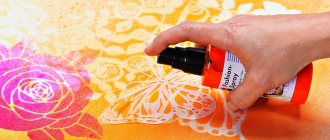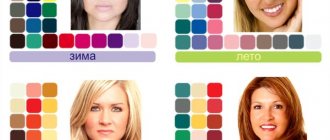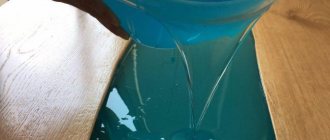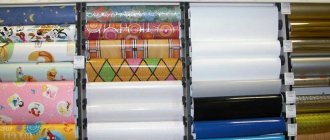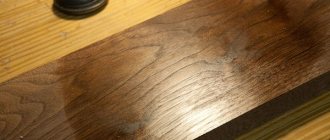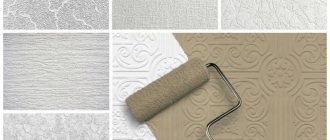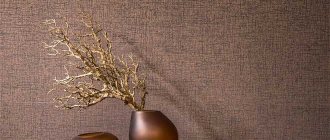Painting on fabric with acrylic paints is a very popular hobby. In order not to spoil the fabric with low-quality acrylic materials or incorrect fabric dyeing technology, before you start working, you need to take the choice of material seriously: choose high-quality material and purchase suitable paints at an art store.
You can buy acrylic paints for fabric at wholesale and retail outlets, in specialized art stores, and also order online. But before you make a purchase, you need to carefully study the reviews, find out how long it will take to dry, and familiarize yourself with the chemical composition of acrylic. In order to receive objective feedback, it is advisable to ask the opinions of acquaintances and friends who are interested in artistic creativity and, in particular, painting fabric using acrylic paints.
Acrylic paints for fabric: basic properties
Acrylic, intended for painting on fabric, is characterized by the following features:
- They dry quite quickly.
- Consist of vegetable or synthetic resins, coloring matter and water.
- They contain a binder component that gives the dye a uniform consistency.
- All components of acrylic paints are combined with each other in such proportions that the dye becomes less toxic and the drying speed increases.
- In its structure, acrylic dye is very similar to tempera, which is traditionally used in icon painting. But, unlike tempera, acrylic dyes dry very quickly, forming a durable protective film on the painted surface.
- This protective film is so durable that if the painted canvas, after complete drying, is rolled into a tight roll and stored, acrylic paints will not warp, crack or crumble.
Common methods for coloring materials
Using the markings indicated on the packaging of the dye, you can determine which material the paint is intended for:
- For thin fabrics such as chiffon and silk, paint marked “Silk” is used. The sign indicates that the hardness of the material will not change significantly after painting;
- For fabrics with a dense texture, paint with the “Textile” indicator is used.
Acrylic paints are available separately for light and dark fabrics
Acrylic paints are used in the following painting methods:
- hot batik is a method that uses molten wax. A fairly complex painting technique requires a lot of experience. The pattern on the fabric is distinguished by beautiful combinations of colors;
- cold batik - painting is done by highlighting the outline of the image with a special felt-tip pen. As a result, the paint does not extend beyond the border of the drawing, giving it clear lines;
- knotted batik - used when dyeing the entire thing. The fabric is pulled together and secured into a knot. The result is original circular patterns with decorative edges;
- free painting resembles a watercolor drawing;
- painting by spraying paint at different angles relative to the material. The results are original figures with blurred edges and varying color intensities.
When are acrylic paints used?
Acrylic, intended for painting on fabric , is not afraid of moisture. This paint is indelible, so they can be safely used to decorate outerwear: jackets, raincoats and raincoats, umbrellas, hats and bags. Such dyes are well suited for beginning artists because they dry quickly and are much cheaper than other types of paints for working on canvas.
Industrially produced acrylic paints designed for working with fabric are available in a wide variety of colors and shades. If you need to make individual fragments of painting on fabric matte, or, on the contrary, glossy, you need to add a special solvent to the paint. Such solvents are also sold in art stores, and are sometimes included in the kit along with a palette of acrylic paints.
The main area of application of acrylic dyes intended for working with canvas is the design decoration of outerwear and tablecloths, the production of picturesque panels on a woven basis.
Attention: It is not recommended to use acrylic dyes for decorating bed linen and underwear, as direct skin contact with the chemicals contained in acrylic dyes for fabric can provoke allergic reactions. For the same reason, painting fabric with acrylic is not recommended when teaching young children in art studios and leisure centers.
Acrylic paint: advantages and disadvantages
Acrylic paints and varnishes have the following advantages:
- strength, elasticity, transparency;
- good adhesion;
- coatings with varying degrees of gloss, from glossy to matte surfaces;
- durability is many times higher than oil and alkyd paints;
- weather resistance, light fastness, resistance to ultraviolet radiation;
- easy to grind and polish;
- temperature of use -50…+175 °С;
- washable, resistant to mineral and vegetable oils, grease and gasoline;
- high technology, simplicity and ease of application,
- quick drying: 15...30 minutes at high temperature drying, 1...3 hours at room temperature;
- environmentally friendly, odorless;
- fire safety of water-based and water-soluble paints.
Among the disadvantages are:
- insufficient resistance to solvents;
- acrylic paint does not combine well with other types of film formers;
- loss of properties by water-dispersed materials upon freezing;
- relatively high price.
Painting on fabric with acrylic
Acrylic dyes are best used for painting silk and cotton fabrics. It is on these fabrics that such colors last the longest and retain their original color.
Before you start painting, you need to wash and carefully iron the piece of material or item of clothing intended to be decorated with artistic painting. After this, the fabric to be painted must be stretched onto a special frame. If it's a relatively small piece of material, an embroidery hoop works great instead of a frame. On the contrary, if the material is large, it will be more convenient to lay it out on the table so that the area to be painted is in the center and is well lit.
The next stage is drawing. To do this you will need a special marker designed for drawing on fabric. It can be purchased at specialized art stores. But, in the absence of a marker, a soft simple pencil or a piece of ordinary white school chalk will do.
Next, you need to mix the shades of the desired colors several times and start coloring. To work, you will need several brushes of different sizes, from the smallest and thinnest (for completing the smallest details of a design or ornament) to large paint brushes (painting the background). If the color seems too intense, you can add a little special thinner to the paint. Then the color will become less saturated.
After finishing work, the fabric with the applied pattern should be dried. The drying time for fabric can be from twelve to twenty-four hours, depending on the saturation of the colors, the thickness of the paint layer and the total area of the painted surface. After drying, the canvas is carefully ironed for final fixation.
Fabric painted with acrylic paints is not recommended to be exposed to direct sunlight.
Types of dyes
Gone are the days when Iran's right hand was cut off for importing artificial dyes. Now, even in their homeland, indigo plants actively synthesize blue pigment to dye denim fabric.
Based on their composition, dyes are usually divided into:
- Acrylic
- Aniline
- Stamp
- Plastisol
- Natural
The choice of a specific paint depends on the purpose of use and the composition of the material. Natural and aniline dyes are best suited for uniform dyeing, and luminous and acrylic dyes are best for painting on fabric.
Acrylic paints
The most popular dyes for silk, wool and cotton fabrics today are acrylic dyes. They are convenient for applying both small dot images and creating entire masterpieces. Spectacular panels, small napkins or original blouses can become a source of pride for you.
The technique of painting with acrylic paints is identical to painting with watercolors or gouache. Draw an image onto the fabric with a pencil or a special marker, and then use a natural bristle brush. To avoid going beyond the boundaries of the drawing, use a colorless outline.
For painting on fabric, water-dispersion based acrylic paints are used. They are odorless and dilute well with water. After complete drying, they become waterproof and indelible from the fabric. However, in order to avoid streaks, it is recommended to wash such items by hand, at a water temperature of no higher than 40 degrees.
Acrylic dyes are produced in the following types:
- In tubes. The most economical form factor. Allows you to maintain the freshness of paint for a long time.
- In cans. Spray paint is used to color large areas of fabric. It should be taken into account that the material itself becomes rigid and stops stretching.
- Spray. Unlike aerosol, the dye is sprayed by droplets. It is not explosive because there is no pressure inside.
The best manufacturers of acrylic paints:
- Simplicol (Simplicol)
- Decola
- Marabu
- Dylon
Aniline dyes
This type of dye is available in powder or liquid form. Suitable for single-color dyeing of natural fabrics.
As a rule, synthetic or mixed fabrics containing more than 60% artificial threads are difficult to redye.
The standard sequence of working with these paints is as follows:
- The pigment is dissolved in a large volume of liquid. The proportion is 1:30 or 1:40 in relation to the weight of the fabric being dyed. So, for a T-shirt weighing 100 grams. use 3-4 liters of coloring liquid.
- The fabric is immersed in the composition and boiled at a temperature of 95 degrees. The longer the process, the darker the color will be.
- At the end of cooking, add 2-5 tbsp. l. salt to fix the paint.
- If you are dyeing wool, add a couple more tablespoons of vinegar to the water. If it’s cotton fabric, then soda.
- Don't forget to rinse the item after painting. The fabric may fade over the next 3-4 washes, so wash it separately from light-colored and easily soiled items.
This coloring option is reminiscent of the batik style. Aniline dyes can also be used to achieve other effects on fabrics:
- Gradient. The fabric is gradually lowered into a vat of dye at equal intervals. Then the area of material that has been painted for half an hour will be darker than the one that was in the liquid for only 10 minutes.
- Divorces. In the 90s, jeans were dyed this way at home. The fabric is twisted as if to squeeze it out and tied with a rope. In this form, the material is boiled.
- Nodular. Small buttons or coins are covered with cloth and wrapped with thread. After painting, characteristic traces in the form of rays remain on the material.
Stamp inks
Stamp inks are used in the hotel industry and laundries for marking bed linen, towels and other fabric consumables. Their chemical composition is varied:
- Alcohol based. Dries quickly. Withstands bleach and boiling.
- Water-glycerin based. Absorbs quickly and does not stain your hands. Withstands temperatures up to 70 degrees. The most commonly used color is black.
- Oil based. Permanent paint. Dries slowly after application.
- Colorless. Invisible in normal lighting. They manifest themselves under the influence of ultraviolet radiation. Used for hidden marking.
Plastisol paints
Luminous patterns on clothes and sneakers are often seen among people hanging out in clubs.
Unique images are applied with special fluorescent paints based on plastisol.
The following types are available for sale:
- Glows in the dark and under UV light.
- Glows only when exposed to UV radiation.
There are also visible and invisible paints. The latter have a white color in daylight, and in the dark they glow blue, yellow, green or another color.
How to choose acrylic paints for fabric: practical recommendations
In order to choose the right quality acrylic paints intended for painting on fabric, you must follow the following practical recommendations:
- You need to purchase fabric dyes in special art stores. High-quality products are quite expensive. Cheap acrylic paints, which are sold in ordinary office supply stores, along with watercolors and gouache for children's creativity, are most likely fake.
- When studying this information, you need to pay attention to the expiration date , manufacturer, license and quality certificate.
- The packaging must provide detailed information about the chemical composition of acrylic paints, as well as detailed instructions for dyeing fabric using this dye. High-quality paints should not contain heavy metals, toxic or allergenic substances.
- Before you start painting a large canvas, you need to test the paints on a small piece of fabric, draw something and evaluate the finished work some time after the paints have completely dried.
- The color of high-quality acrylic paints should be bright, rich, and at the same time natural. Paints should have a characteristic smell. At the same time, a sharp, unpleasant “chemical smell” indicates that the paints were manufactured in violation of industrial production technologies.
- High-quality acrylic dyes should not “bleed” on the fabric, they should be persistent and durable, resistant to water, i.e. the paint should be “indelible”.
In order for a thing painted with acrylic to last a long time, and for the applied painting to delight you with its beauty and brightness for a long time, it is necessary to follow simple rules for caring for painted things.
To wash items decorated with fabric painting, you must use non-aggressive detergents . The use of bleaches is prohibited, as bleach penetrates deep into the material and destroys paint molecules. Washing water should not be hot, the maximum water temperature is forty degrees. Small items decorated with paintings are recommended to be washed by hand, without using a machine wash. They cannot be wrung out or twisted; simply straighten out the washed item and carefully hang it on a clothesline or on the back of a chair. After drying, you can already use it.
Painting on fabric using acrylic paints is a fascinating activity that opens up scope for creativity. This hobby develops imagination , artistic taste, color sense and fine motor skills. The main thing is to choose high-quality paints for work and strictly follow the technology of painting on fabric. Beginning artists are recommended to use ready-made sketches from the Internet and specialized literature for painting. Experienced artists can improvise and create their own original designs. There can be a great variety of subjects for painting on fabric: from geometric patterns to landscapes and genre paintings.
Recently I have become interested in painting on fabric and using acrylic paints. Very satisfied. They do not spread and are well absorbed .
Ivan
I often use acrylic in my work and am very pleased. Unpretentious and non-capricious. All good.
Victoria, 20 years old
I've been working with these types of paints for a long time. Attracts quality and price. I even painted on my nails. They hold up well and do not lose color.
Irina, 27 years old
Application area
Fabric dyeing is used in various industries:
- Furniture industry. The unique upholstery of a sofa or chairs is often a source of pride for the owners.
- In the fashion industry. Every year, fashion designers show us the fashionable colors of the new season from the catwalks.
- Creation of interior items. Various panels, tablecloths, paintings, curtains add their own flavor to the design of the room.
At home, faded or worn items are often given new life with the help of paints. Needlewomen use various pigments to paint decorative napkins and clothing accessories.
Choosing fabric for painting
Before you begin, you need to know which acrylic fabric paints you should buy and how to use them depending on the fabric. Determining the right acrylic is not difficult.
You might be interested in Sew without patterns: dress therapy with Julia
Fabrics made from natural materials are ideal for painting.
To understand what kind of paint you need to purchase, you should look at the label.
- Silk sign. This means that the stiffness of the fabric will not be affected, and the dye is suitable for light and thin items, such as chiffon or silk.
- Textile sign. This dye is suitable for dense and stiff fabrics (jeans, leather, linen), it does not spread as much and is easy to work with on such a surface.
The paint packages indicate what kind of fabric they are suitable for.
For work, it is best to select things from light or white fabric - this way, the acrylic colors retain their original color. On a dark product, shades may change.
Methods of applying acrylic paint
There are several different ways to paint a design on fabric using acrylic paints. They are suitable for both beginners and people who have been drawing for a long time.
- Copying. The simplest method, which does not require any specific skills. The most necessary thing for this method is the ability to clearly transfer the pattern onto the thing. The desired design is first printed (preferably the outlines are thick and dark), then the fabric is stretched over a piece of cardboard or plywood and fixed. The printed drawing is placed under the product and the outline is redrawn. After this they begin to paint.
You may be interested in: Making your own wedding veil for the bride
Drawing with stencils
- Another fairly simple way is to use special stencils. You can make them yourself from paper, or you can buy them in a store. This technique is suitable for those moments when the same design needs to be copied (for example, for uniform T-shirts or original fabric napkins). The stencil is attached to the desired location, and paint is applied on top.
- A more complex method is to draw a sketch by hand and then paint it. If you have enough imagination and skills, you can try this method. Some professionals don't even sketch and work straight away with color, but it's better to start with a pencil drawing. First, you should also sketch your future work in an album or sketchbook in order to know exactly the location of the sketch, its size, etc.
Thanks to manual work, unique things are obtained.
To start working with a certain method, you should consider some recommendations:
- Before purchasing, be sure to check the price, manufacturer and expiration date. This will help you avoid purchasing low-quality and old paints.
- The presence of toxins and allergens in dyes and the presence of an unpleasant odor are also checked.
- Before dyeing, apply the dye to some unwanted fabric to check the color and the nature of the application.
- Brushes, sponges and rollers are made from synthetics.
- A new layer (if there is no purpose of mixing paints) is applied only after the lower one has dried.
- A day after the picture is ready, iron it for 5 minutes.
High-quality dye remains stable after heat treatment.
To begin any work, the artist must have the following tools and materials:
- The paints themselves (there are different dyes in stores; they can be labeled “acrylic paints” or “acrylic”, and will differ little).
- Soft synthetic brushes.
- Pins, clothespins, hooks.
- Frame, hoop, plywood or piece of cardboard.
- Thinner (also available at art stores).
- Sponges, cotton swabs.
- Palettes, containers for diluting paints and water.
- Hairdryer and iron.
The work room should be spacious and bright, well ventilated
